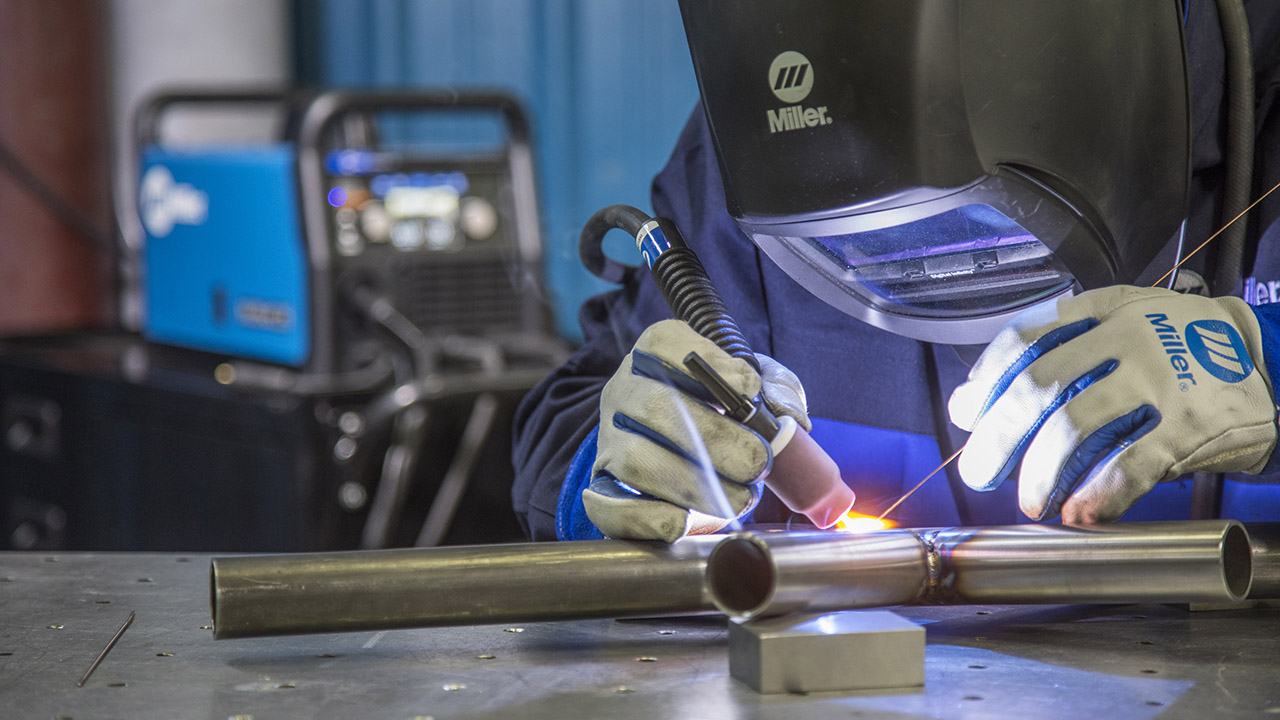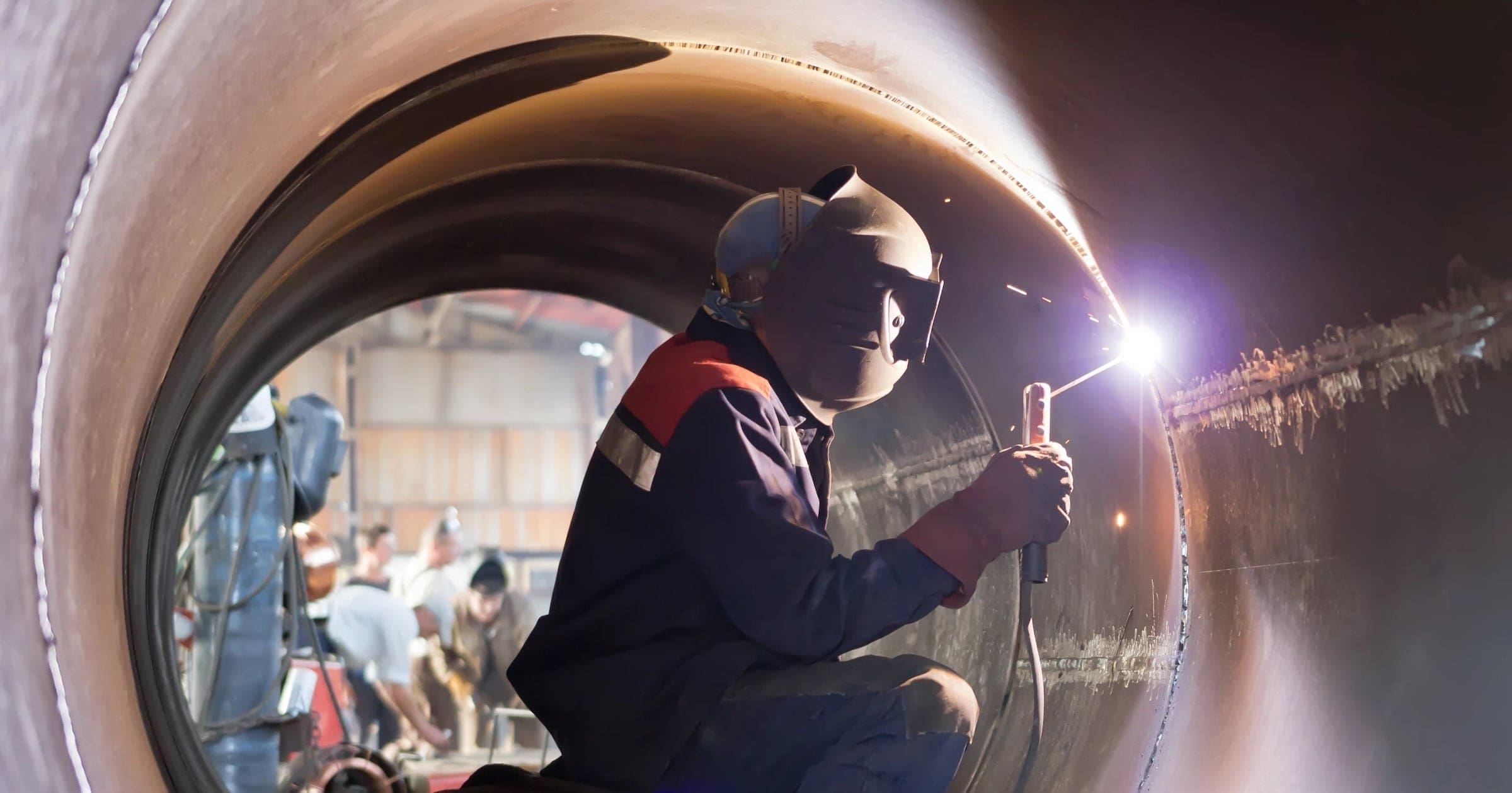Common Welding Repair Service Issues and Just How to Address Them Effectively
Welding fixings typically come across a variety of issues that can jeopardize the integrity of the end product. Common troubles consist of inadequate infiltration, porosity, and imbalance, among others. Each issue offers unique challenges that need certain approaches for resolution. Recognizing these concerns is necessary for welders aiming to improve their abilities and outcomes. This discussion will certainly check out these typical welding repair concerns and effective approaches to address them.
Insufficient Penetration
Insufficient infiltration occurs when the weld metal stops working to fully fuse with the base product, causing weak joints and prospective structural failings. This concern typically stems from inadequate heat input, inaccurate electrode angle, or incorrect welding rate. Welders may encounter poor infiltration as a result of a miscalculation of the needed specifications for a details material density or type. Additionally, contamination on the base product's surface area can hinder reliable bonding, intensifying the issue. To resolve inadequate infiltration, welders ought to guarantee ideal setups on their devices and maintain a clean job surface. Normal inspection of welds is recommended to identify any deficiencies early, permitting for prompt improvements and the avoidance of jeopardized architectural stability in bonded settings up.
Porosity
Porosity is a common flaw in bonded joints that shows up as small gas bubbles trapped within the weld steel. This issue can compromise the integrity of the weld, bring about lowered strength and prospective failure under anxiety. Montana Mobile Welding and Repair. Porosity typically occurs from contamination, moisture, or improper welding techniques, which allow gases to get away right into the molten weld swimming pool. To attend to porosity, welders should ensure proper surface area preparation, maintain a tidy functioning setting, and make use of appropriate welding criteria. In addition, choosing the ideal filler material and securing gas can minimize gas entrapment. Normal inspection and testing of welds can aid recognize porosity early, guaranteeing timely restorative activities are taken, consequently maintaining the top quality and integrity of the bonded framework
Misalignment
Imbalance in welding can develop from different elements, consisting of inappropriate arrangement and thermal growth. Recognizing the origin is necessary for efficient resolution. Several correction techniques are offered to straighten elements and assure architectural stability.
Root causes of Imbalance
Welding misalignment frequently stems from a selection of underlying problems that can compromise architectural honesty. One main cause is improper fit-up of elements prior to welding, which can result in gaps and unequal surface areas. Variants in thermal expansion throughout the welding process can additionally lead to distortion, specifically if the materials being signed up with have various coefficients of expansion. Additionally, inadequate securing and fixturing might fail to hold parts safely in position, leading to activity during welding. Inadequately kept devices, including welding machines and tools, may present incongruities in the weld bead, more adding to imbalance. Finally, operator error, originating from not enough training or experience, can also play a considerable duty in developing misaligned welds.
Correction Techniques Readily Available
Addressing imbalance effectively needs a mix of rehabilitative strategies tailored to the specific concerns handy. One typical approach is making use of jigs or components to hold elements in the right setting during welding, making certain regular placement. In addition, pre-heating the products can aid minimize distortion and enhance fit-up. For substantial imbalance, mechanical realignment techniques, such as using hydraulic jacks or clamps, can be used to fix the setting before welding. Post-weld heat treatment might likewise be needed to soothe stresses brought on by imbalance. Finally, careful assessment and modification during the configuration phase can avoid misalignment concerns from ending up being considerable troubles, advertising a smoother welding process and boosting general structural honesty.
Distortion
Distortion is a typical obstacle in welding that can develop from numerous aspects, consisting of uneven heating & cooling. Understanding the causes of distortion is essential for implementing efficient prevention methods. Resolving this issue not just boosts structural stability yet likewise enhances the general high quality of the weld.
Sources of Distortion
When based on the intense warm of welding, products usually undergo modifications that can cause distortion. This sensation primarily occurs from thermal expansion and contraction throughout the welding procedure. As the weld area warms up, the product broadens; upon air conditioning, it gets, which can develop inner stresses. On top of that, uneven heating across a workpiece can intensify these stresses, causing bending or bending. The kind of material likewise plays a substantial function; steels with differing thermal conductivity and coefficients of growth might react in different ways, leading to unforeseeable distortions. Inadequate joint style and inadequate fixturing can contribute to misalignment during welding, enhancing the likelihood of distortion. Comprehending these reasons is crucial for effective welding repair service and prevention methods.
Prevention Techniques
Efficient avoidance strategies for distortion throughout welding concentrate on controlling warmth input and making certain proper joint layout. Preserving a constant warm input aids to lessen thermal growth and contraction, which can result in distortion. Utilizing methods such as pre-heating the work surface can also reduce the temperature level gradient, promoting uniform home heating. Additionally, picking ideal joint designs, such as T-joints or lap joints, can boost aws qc1 security and lower stress and anxiety concentrations. Implementing correct fixturing to safeguard the work surfaces in position additionally aids in keeping alignment throughout the welding process. Ultimately, staggered welding sequences can distribute heat more evenly, stopping localized distortion. By using these methods, welders can substantially decrease the likelihood of distortion and enhance the overall quality of their welds.
Cracking
Cracking is a common problem experienced in welding fixings, typically resulting from numerous aspects such as improper cooling rates, product choice, or insufficient joint prep work. The occurrence of cracks can significantly jeopardize the stability of the weld, resulting in prospective failures during operation. To resolve this issue, welders have to first evaluate the root triggers, ensuring that materials are compatible and suitably selected for the particular application. Additionally, managing the cooling price throughout the welding process is crucial; quick cooling can generate stress and anxiety and lead to splitting. Proper joint layout and preparation additionally contribute to reducing the threat. Applying these approaches can boost weld quality and durability, eventually minimizing the possibility of splitting in finished weldments.

Insufficient Combination
A substantial problem in welding repair work is incomplete blend, which takes place when the weld steel does not effectively bond with the base material or previous weld passes - Montana Mobile Welding and Repair Belgrade Fabrication. This problem can result in weak points in the joint, potentially endangering the stability of the bonded structure. Factors contributing to insufficient combination include inadequate warmth input, improper welding technique, and contamination of the surface areas being joined. To address this concern efficiently, welders should guarantee correct pre-weld cleansing and surface preparation, along with change their welding specifications to achieve sufficient infiltration and combination. Routine examination throughout the welding process can likewise help recognize insufficient fusion early, enabling for timely rehabilitative steps to boost the overall quality of the weld
Overheating
While welding repairs can enhance architectural honesty, overheating presents a substantial challenge that can bring about product degradation. Too much warm during welding can modify the mechanical properties of metals, causing lowered toughness, raised brittleness, and bending. This phenomenon is specifically crucial in high-stress applications where structural reliability is critical. Recognizing getting too hot can involve visual assessments for discoloration or distortion, in addition to checking temperature during the welding process. To alleviate the threats associated with getting too hot, welders must employ suitable strategies, such as controlling warmth input, changing traveling speed, and using ideal filler materials. Furthermore, applying pre- and post-weld heat treatments can aid bring back material residential properties and enhance the general high quality of the repair work, making certain long-lasting efficiency and safety.
Regularly Asked Concerns
What Are the Common Indicators of a Welding Defect?

Exactly How Can I Check My Welds for Top quality?
To examine welds for top quality, one can utilize visual assessments, ultrasonic screening, and radiographic approaches. Each method assures architectural integrity, identifies flaws, and verifies adherence to specified standards, ultimately enhancing the dependability of the welded joints.
What Safety and security Preventative Measures Should I Take While Welding?
When welding, one need to prioritize safety and security by wearing ideal individual safety devices, lotos welder making sure appropriate ventilation, protecting flammable materials away, keeping a tidy office, and being conscious of surroundings to stop crashes and injuries.
Can I Fix a Weld Without Redoing the Entire Joint?
Repairing a weld without redoing the whole joint is possible, depending upon weblink the damages (Fabrication). Strategies such as grinding, adding filler product, or utilizing a welding procedure can properly resolve certain problems while maintaining the surrounding framework
What Equipment Are Essential for Efficient Welding Repairs?
Essential devices for efficient welding repairs include a welding machine, wire brush, mill, protective equipment, clamps, and filler products. Each device plays a crucial role in making certain quality and safety and security during the repair work procedure. Porosity usually arises from contamination, moisture, or inappropriate welding techniques, which permit gases to get away into the molten weld swimming pool. Poorly maintained devices, including welding machines and devices, might introduce disparities in the weld grain, further adding to misalignment. When subjected to the extreme heat of welding, products frequently undergo changes that can lead to distortion. Breaking is a common issue encountered in welding repairs, typically resulting from different factors such as inappropriate cooling prices, material choice, or inadequate joint prep work. A significant issue in welding repairs is insufficient blend, which happens when the weld steel does not properly bond with the base product or previous weld passes.